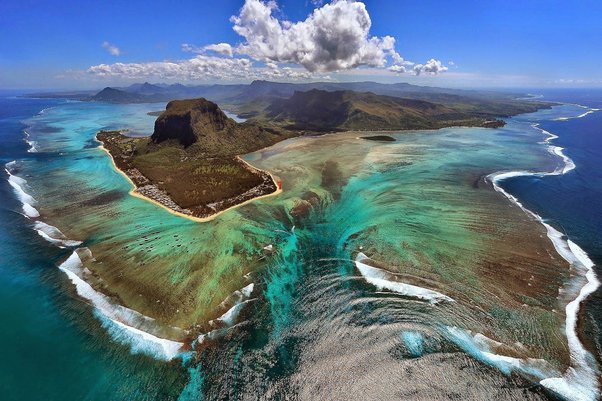Mauritius, a small island nation in the Indian Ocean, is often overlooked as a mere tropical paradise, but its geography holds a rich tapestry of stories waiting to be unraveled. From the commanding peaks of its verdant central plateau to the breathtaking coastal landscapes that hug its shores, the terrain of Mauritius is a captivating blend of natural wonders that have shaped the lives and livelihoods of its people.
As you step onto the island, the first thing that strikes you is the sheer diversity of its landscapes. Imagine a land where the rolling hills of the interior seamlessly transition into rugged cliffs that plunge into the turquoise waters of the Indian Ocean. Where lush, verdant forests give way to white-sand beaches and tranquil lagoons, each a testament to the island’s geological history and the intricate balance of its ecosystems.
At the heart of Mauritius lies the central plateau, a vast tableland that rises up from the surrounding lowlands. This impressive landform, formed by the volcanic activity that gave birth to the island millions of years ago, is the backbone of Mauritius, providing a canvas for a breathtaking array of natural features. Imagine hiking through the lush, verdant forests of the Black River Gorges National Park, where you might catch a glimpse of the iconic Dodo bird’s distant cousin, the Mauritius Kestrel, soaring overhead.
As you ascend the slopes of the central plateau, the landscape transforms, revealing a mosaic of rugged, weathered peaks and deep, winding valleys. The tallest of these peaks, Le Pouce, stands proudly at 812 meters (2,664 feet), offering a commanding view of the island’s diverse terrain. But this is just the beginning of Mauritius’ geographical wonders.
Venture further, and you’ll encounter the captivating coastal regions that have long captured the imaginations of travelers and adventurers alike. The island’s coastline is a masterpiece of contrasts, where the turquoise waters of the Indian Ocean meet the dramatic cliffs and sandy beaches that encircle the island. Imagine standing on the white-sand beaches of Grand Baie, watching as the waves crash against the volcanic rocks that jut out into the sea.
But the geography of Mauritius is not just about the grand, sweeping vistas. It’s also about the intricate details that make this island truly unique. Take, for instance, the stunning natural rock formations that dot the landscape, like the iconic “Seven Colored Earths” of Chamarel, where layers of multicolored sands have been sculpted by the elements into a mesmerizing, otherworldly display.
And what of the island’s many rivers and streams, which have carved their way through the terrain over millennia, creating a network of lush, verdant gorges and waterfalls? Imagine the thrill of exploring the hidden depths of the Rochester Falls, where the river cascades over a series of tiered, basalt ledges, creating a natural wonder that has captivated visitors for generations.
As you delve deeper into the geography of Mauritius, you’ll uncover a world of hidden gems, from the serene, turquoise-hued lagoons that dot the coastline to the ancient volcanic craters that dot the interior. Each of these natural features tells a story, a testament to the island’s complex geological history and the ever-changing forces that have shaped its terrain.
But the geography of Mauritius is not just a static backdrop; it is a living, breathing entity that continues to evolve and shape the lives of the people who call this island home. The fertile soils of the central plateau have long supported a thriving agricultural industry, with sugarcane and tea plantations becoming a dominant feature of the landscape. And the island’s coastal regions, with their abundant marine life and stunning beaches, have become a hub of tourism, drawing visitors from around the world who come to experience the island’s natural beauty.
Yet, even as Mauritius has embraced modernity and development, the island has remained steadfast in its commitment to preserving its natural heritage. The establishment of national parks and conservation areas, such as the Bras d’Eau National Park and the Ile aux Aigrettes Nature Reserve, have ensured that the island’s unique ecosystems and endangered species are protected for future generations to enjoy.
So, as you explore the terrain of Mauritius, let your senses be captivated by the sheer beauty and diversity of this remarkable island. From the towering peaks of the central plateau to the serene, turquoise-hued lagoons that dot the coastline, the geography of Mauritius is a testament to the power of nature and the resilience of the human spirit. And who knows, perhaps in the course of your journey, you’ll uncover a hidden gem or two, a secret that only the island itself can reveal.



